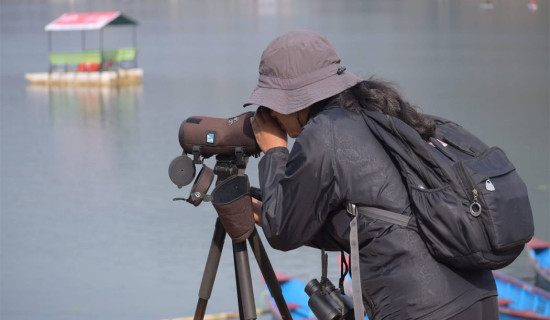- Wednesday, 14 January 2026
Sustainable Tourism
There was once a time when cities and states did not believe there was anything such as overtourism. The prevalent thought was that tourists brought money, so, the goal was to bring more tourists to earn more money. Now though, that thought has changed. Authorities have started to see the need to control the number of visitors that come to their regions.
Venice recently made headlines for imposing a €5 fee on daily visitors above the age of 14 to reduce tourist load and preserve the city’s liveability. It also requires travellers to book their entry into the city in advance. In 2019, the Netherlands announced that it would stop promoting itself as a tourist destination and would concentrate on redistributing the visitors it gets to lesser-known parts of the country.
Overtourism has started to become a concern for Nepal too. Almost every year, pictures of large crowds on Everest cast a shadow over the mountain’s glory and majesty. Littering and improper waste management have made pristine Himalayan ecosystems vulnerable to damage. Cultural heritage sites are almost perennially overcrowded and internal and international tourists have affected the tranquillity of certain locations around the Kathmandu Valley.
However, Nepal cannot afford to limit tourism like the European cities mentioned above because it is a significant contributor to its economy. The sector creates and sustains thousands of jobs, brings in much-needed foreign currency and helps promote the country to the world. The benefits outweigh the drawbacks for now, but there are drawbacks that we need to start thinking seriously about.
Pollution needs to be checked, especially along trekking and mountaineering routes. Plastic has made its way everywhere and is destroying the beauty of our hills and plains. Trekkers, climbers and adventurers must be educated about their environmental impact and encouraged to minimise their footprint. Our unspoiled environment is a major selling point for our country. If we lose that then we will have very little to attract people with. So, we need to make tourists environmentally responsible if we want to keep our tourism industry intact.
Cultural heritage preservation is also something we must focus on. Nepal boasts temples, palaces and traditions that have endured for centuries. The influx of tourists from inside and outside the country, however, poses a threat to the authenticity and sanctity of these sites. In addition to overcrowding, over-commercialisation can erode the spiritual essence of these places. Today, there are almost as many cafes and restaurants around Hanumandhoka Durbar Square as there are monuments. In Lalitpur, locations like Mangal Bazaar and Sundhara have become commercial hubs. This has affected the ambience and aesthetics of these millennia-old monument zones.
Commercial establishments are necessary around tourist sites to cater to the visitors’ needs and demands but we must find a way to protect both the structure and spirit of our heritage while benefiting from them economically.
Government regulations can be of some help. Nepal has made strides in introducing policies to promote sustainable tourism, from placing restrictions on activities that can be carried out in national parks and protected areas to setting guidelines for trekking and mountaineering. Local levels have also taken the lead in protecting their cultural heritage, from the Kathmandu Metropolitan City banning vehicles from entering Hanumandhoka to the Lalitpur Metropolitan City prohibiting people from unnecessarily sitting on structures in the Patan Durbar Square, dirtying them, damaging intricate carvings and creating crowds. But there is still work to be done, especially in monitoring and enforcement.
To really ensure sustainable tourism though, the nation needs to engage local communities. Tourism initiatives should be locally driven and the benefits locally distributed. Nobody can know an area like the people who live there. Thus, making them major stakeholders in tourism will help authorities design suitable packages that present tourists with exciting opportunities while causing minimal damage to the regions they visit. And, given the rights and powers given to the local and provincial governments by the constitution, localising tourism should not be that hard to do.
Overtourism is not a problem unique to Nepal. It is rather an emblem of the ongoing global struggle to reconcile economic growth with ecological and cultural preservation. Some countries have managed to achieve this balance better than others. Nepal must learn from the successes of others and become a model for developing nations facing the same dilemmas with sustainable tourism.
Moreover, Nepal can leverage its position as a land of unparalleled natural and cultural beauty to advocate for sustainable tourism on the global stage. It can be a strong voice that argues for responsibility on the side of the tourist-sending countries as well.














